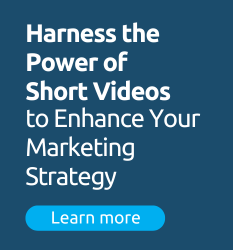Education marketing is poised for a transformative shift in 2025. As technological innovations accelerate and global competition intensifies, schools, colleges, and universities must adopt strategies that meet the evolving expectations of prospective students.
If you’re new to educational marketing or administration, you may benefit from a working definition of the topic we’re exploring. What is education marketing? Education marketing promotes educational institutions, programs, and services to prospective students, their families, and other stakeholders.
It involves creating targeted campaigns that address the unique needs, aspirations, and challenges of prospective learners. At its core, education marketing is about building trust, showcasing value, and creating meaningful connections that align an institution’s offerings with the goals of its audience.
This blog, inspired by insights from the webinar Staying Ahead in 2025: Top Education Marketing Strategies for Success, explores the key trends and actionable strategies to help educational institutions thrive in this dynamic environment. Let’s explore!
Great Expectations: What Prospects Are Looking for in 2025
Prospective students in 2025 demand education marketing efforts that resonate with their individual aspirations, challenges, and goals. Personalization has become a non-negotiable element of successful marketing, requiring institutions to deliver tailored messages across diverse platforms. Students value authenticity and transparency, seeking honest communication about program costs, outcomes, and career prospects.
Social proof is more influential than ever. Reviews, testimonials, and user-generated content (UGC) have become vital tools in building trust and credibility. Institutions that effectively showcase authentic student experiences on platforms like TikTok, Instagram, and YouTube can connect with audiences on a deeper level, cutting through generic promotional noise.
With over 70% of initial student engagement occurring online, a robust digital presence is critical. Schools with interactive websites, active accounts, and engaging virtual events stand out in an increasingly competitive global market. The ease of accessing information about institutions worldwide has raised the stakes, emphasizing the need for innovative and standout marketing strategies.
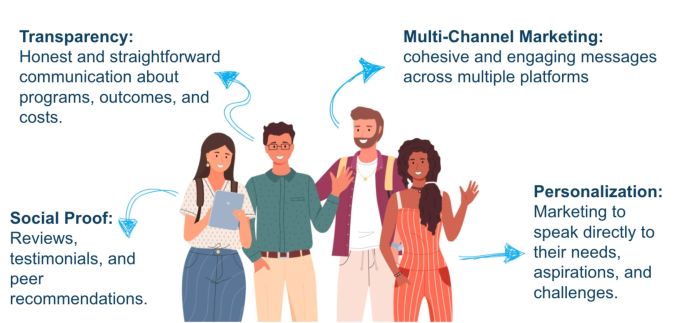
Source: HEM
Are you seeking strategies for a future-oriented education marketing plan? Reach out to learn about our specialized digital marketing services!
Leveraging AI for Personalization and Automation
Artificial intelligence (AI) is revolutionizing education marketing by enabling personalized and efficient communication. In 2025, institutions will be using AI-driven tools to deliver highly targeted content and streamline engagement processes.
AI-powered email marketing has proven to boost open rates and increase revenue per email by analyzing prospective student data. Dynamic segmentation, which groups students based on behaviours like website visits and social interactions, allows institutions to craft campaigns aligned with individual journeys.
Example: Putting prospects into groups based on their site usage as pictured below is the first step in dynamic segmentation. What comes next? Program your CRM system to update segments as prospects progress through the enrollment process, and finally, use automation tools (ideally integrated into your CRM program) to send follow-up messages after interactions like webinar attendances or program page visits. Amidst many competitors, you must stay fresh in the minds of your prospective students.
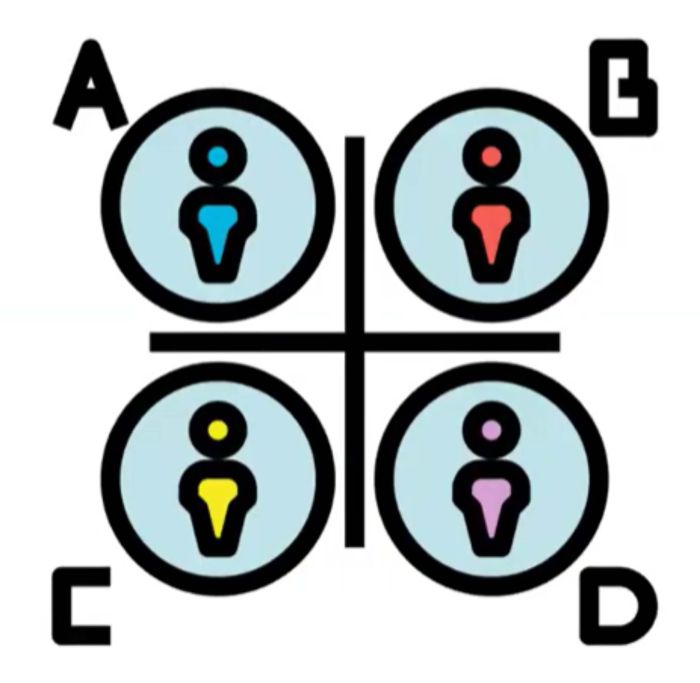
Source: HEM
Chatbots are emerging as indispensable tools for managing routine inquiries. Capable of handling up to 80% of these interactions, chatbots provide instant, tailored responses that improve lead-to-application conversion rates. From guiding students to specific program pages to assisting with application processes, chatbots reduce administrative strain while enhancing user experience. For international students, multi-language support ensures inclusivity and accessibility.
Example: Use Chatbots intentionally like the University of Windsor did below. Site visitors are asked with whom they would like to connect and are sent to a page where they can select the right person to meet their needs. This allows for a customized, self-directed experience.
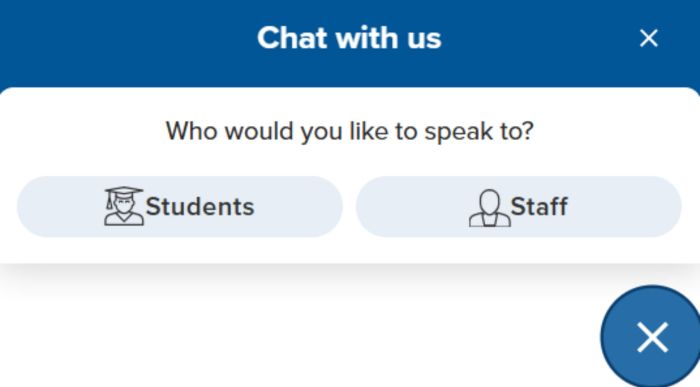
Source: University of Windsor
Predictive analytics, another AI-driven innovation, enables institutions to anticipate prospective student needs. By analyzing past behaviors, institutions can proactively craft campaigns that address concerns and guide students toward enrollment.
By analyzing historical data such as website interactions, email engagement, and application trends, predictive analytics identifies patterns that signal a prospective student’s likelihood to take specific actions, such as submitting an application or attending an open house.
This technology allows institutions to craft highly targeted campaigns that address common concerns, deliver timely follow-ups, and provide personalized recommendations. Predictive analytics can be applied across various channels, including email marketing, chatbot interactions, and digital advertising platforms, making it a versatile tool for improving enrollment outcomes and optimizing the student journey.
Optimizing Digital Advertising Strategies
Digital advertising is an essential component of education marketing, and in 2025, precision and creativity will define success. Institutions are refining their pay-per-click (PPC) campaigns and leveraging video ads to capture attention and drive conversions.
Precision targeting through platforms like Google Ads and Meta Ads ensures relevance. Long-tail keywords and geo-specific targeting help align campaigns with user intent, making them more effective. For example, phrases like “best nursing programs in Toronto” resonate more with prospective students than generic terms such as ‘nursing programs’ or ‘nursing school’.
Video content continues to dominate as the preferred format for engagement. Authentic, short-form videos featuring user-generated content are especially effective. These videos highlight program features, campus life, and success stories, building trust and fostering emotional connections.
Engaging carousel ad formats are also gaining traction, offering a visually dynamic way to present multiple aspects of an institution in a single advertisement. By showcasing different programs, campus highlights, or student testimonials in a swipeable format, carousel ads keep prospective students engaged longer. These ads are particularly effective on platforms like Instagram and Facebook, where interactive content drives higher click-through rates and engagement.
Example: Static ad images are more likely to be skipped. Carousel ads are an attention-grabbing format that incites curiosity. Valuable, relevant, and short-form copy as pictured below works well as it keeps attention while imparting information your audience cares about.
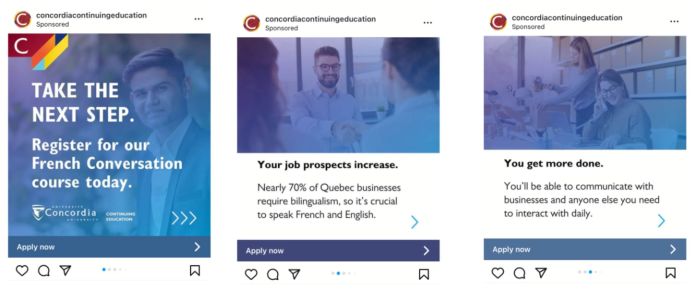
Source: Concordia University
Remarketing strategies are proving invaluable for re-engaging prospective students. Dynamic ads tailored to past interactions, such as revisiting previously explored programs, help institutions stay top-of-mind and boost conversion rates. Platforms like TikTok provide creative opportunities to connect with younger audiences, further enhancing reach and engagement.
Navigating Changing Search Landscapes
The rise of AI-powered search engines like Google Gemini and ChatGPT is reshaping how users seek information. These tools prioritize conversational content and direct answers, requiring institutions to adapt their SEO strategies to maintain visibility.
Example: Incorporating conversational, question-based phrases as pictured below helps your site show up in search results. This is particularly relevant as AI, which favors concise answers, emerges as one of the most transformative education marketing trends. Try to add relevant, on-topic questions that your prospects are likely pondering into site content seamlessly. Then add the answer to that question. This boosts your chances of being featured in “People Also Ask” and other types of rich results.
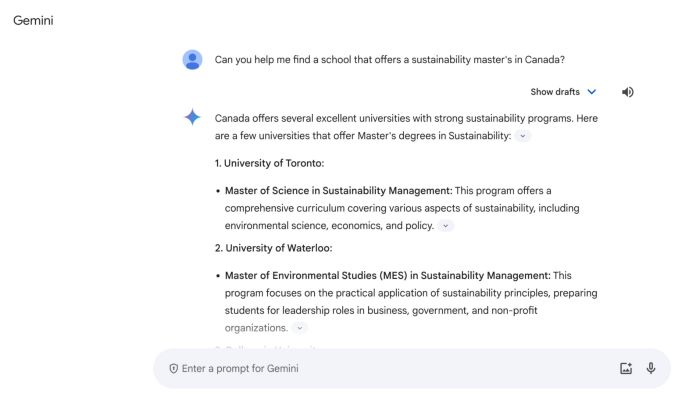
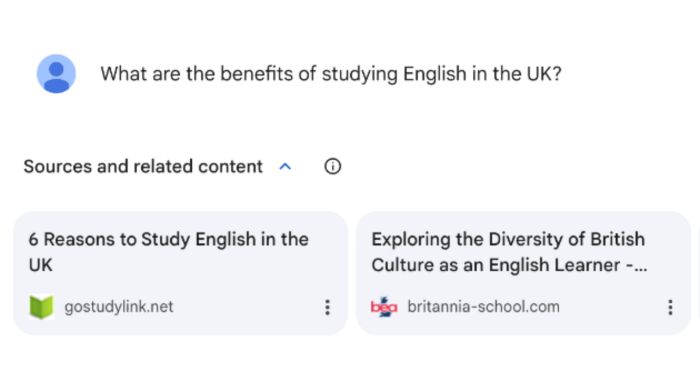
Source: Gemini
High-quality, question-based content is essential for meeting the needs of AI-driven search engines and enhancing user experience. Institutions are optimizing FAQ pages to provide comprehensive, conversational answers to prospective students’ most common questions.
For example, detailed FAQ sections that include interactive components, such as collapsible menus or embedded videos, help address a wide range of inquiries efficiently. This approach not only supports AI-driven search tools like Google Gemini (Formerly Bard) and ChatGPT but also caters to user expectations for clear, straightforward information.
Voice search optimization further complements this strategy. With 58% of users relying on voice search daily, content must include natural, long-tail keywords that align with how people speak. For instance, crafting answers to questions like “What’s the cost of a nursing program in Toronto?” ensures visibility in voice and conversational search queries. Together, these strategies create a seamless path for students to access the information they need, whether browsing through AI-enhanced search results or engaging directly with an institution’s website.
Example: AI tools like Copilot pictured below offer user-friendly, well-structured answers to education-related questions, guiding prospective students effectively to your institution.
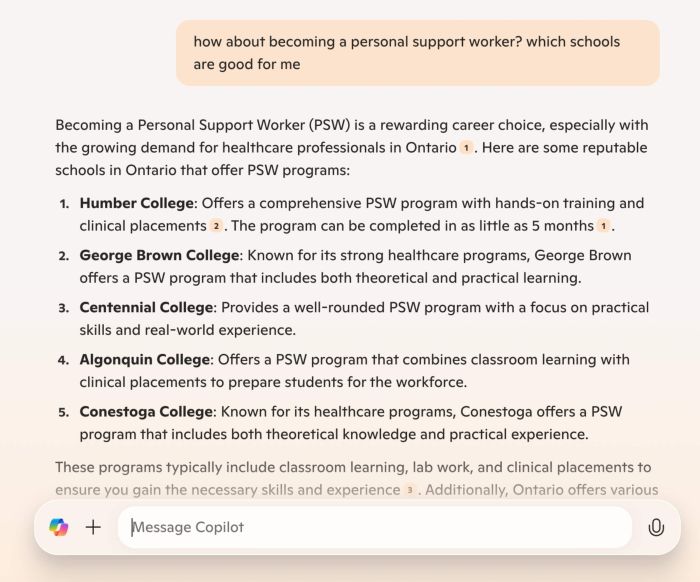
Source: Copilot
Local SEO remains a powerful driver of inquiries. Enhancing Google Business Profiles, incorporating location-specific keywords, and encouraging positive reviews are key strategies. Schema markup further boosts visibility by creating rich search results, such as event listings and review stars, that attract clicks and engagement.
Practical Strategies for 2025
Content remains central to education marketing success, but its format and delivery are evolving. High-quality, SEO-optimized content that directly addresses student questions is crucial. Institutions are increasingly adopting visual and interactive formats, such as infographics, videos, and quizzes, to create engaging and shareable content.
Marketing technology plays a pivotal role in streamlining operations. CRM systems and automated email tools enable institutions to automate routine communications, such as application reminders and follow-ups. This ensures timely interactions while freeing up resources for strategic initiatives.
Mautic is a cutting-edge CRM and marketing automation solution tailored specifically for the education sector. Built on the robust Mautic platform, HEM has enhanced this system to address the unique challenges and opportunities faced by educational institutions.
By enabling streamlined lead management, Mautic by HEM allows schools to segment, manage, and follow up with prospects efficiently, enhancing both cost-effectiveness and operational efficiency.
With Mautic, your school can supercharge your marketing efforts through automated email campaigns, customizable forms, and seamless workflows. The platform’s out-of-the-box custom reports provide deep insights into admissions efforts, helping schools track team productivity and the progress of leads through the enrollment funnel.
Tools for automated SMS and email follow-ups, meeting bookings, and calls empower teams to nurture leads effectively, turning prospects into enrolled students. Designed to simplify complex tasks and enhance collaboration, Mautic is the ideal solution for schools looking to elevate their student recruitment strategies.
In an era of rapid technological advancements, agility is essential. Institutions must regularly monitor campaign performance, experiment with new platforms, and stay informed about industry innovations. Being prepared to pivot strategies allows institutions to adapt to changing audience preferences and platform updates.
The Road Ahead
In summary, What will education marketing look like in 2025? In 2025, education marketing will focus on data-driven, personalized, transparent, and multi-channel strategies to engage students effectively. When you embrace AI-driven tools, optimize digital advertising, and adapt to evolving search landscapes, your school can navigate the complexities of a highly competitive market.
As the digital-first generation redefines expectations, educational institutions have a unique opportunity to deliver value and build trust at every stage of the student journey. The strategies outlined here provide a comprehensive roadmap for success, ensuring your school sees results in 2025 and beyond.
Frequently Asked Questions
Question: What is education marketing?
Answer: Education marketing promotes educational institutions, programs, and services to prospective students, their families, and other stakeholders.
Question: What will education marketing look like in 2025?
Answer: In 2025, education marketing will focus on data-driven, personalized, transparent, and multi-channel strategies to engage students effectively.




